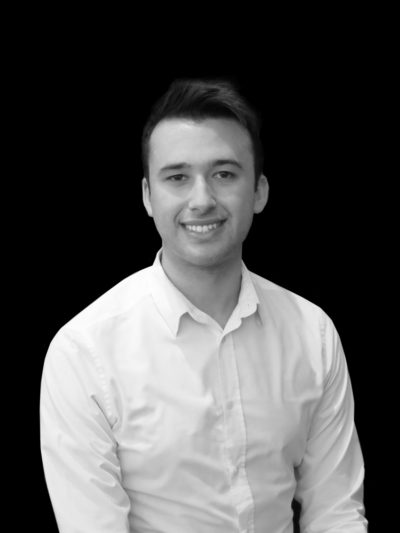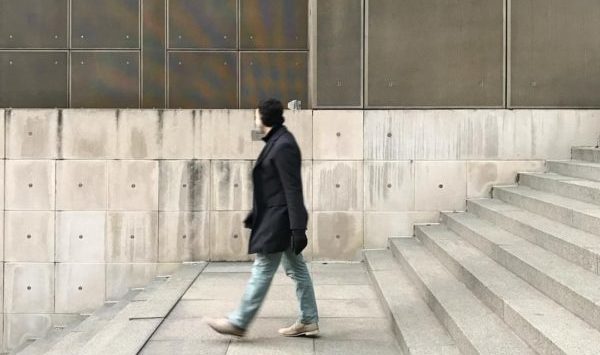The American Institute of Architecture Students (AIAS) is celebrating the 60th anniversary of student excellence in leadership, service, and design. In honor of our 60th year, the AIAS is excited to share 60th: Legacy, an ongoing weekly celebration of and thanks to our alumni sponsored by Professional Publications, Inc (PPI). PPI is a publisher of professional licensing exam materials since 1975 and wants to recognize those who have helped the AIAS achieve 60 years of success.

Name
George Guarino III, Assoc. AIA
Organization
MAP Strategies, FormWork
Title
Associate Project Director, Partner
Connect
Twitter | Instagram | LinkedIn | Website
Bio
George Guarino is a graduate of Syracuse Architecture. He was immediately exposed to the energy of AIAS as the local chapter hosted a Quad Conference (Reclaiming Architecture, Fall 2010) months into his architecture school career. George ran for a leadership role and a number of years later was elected as Chapter President. Nationally, George served as Editor-in-Chief of CRIT for two years and served on various committees. After brief stints at Solomon Cordwell Buenz and Skidmore Owings and Merrill, George is now Associate Project Director at MAP Strategies, an architectural compliance firm where he leads the office’s project management team. Joining a young, well-positioned startup just months after its founding has allowed George to work directly with an incredibly diverse roster of clients and colleagues in Chicago architecture, real estate, and construction. He is also Partner of an associated technology company, FormWork. The online app was developed by applying architectural and entitlement knowledge to minimize the headache associated with the permitting of architecture and construction. As a company, we strive to accelerate the pace of building and allow architects to ‘spend their time on ideas, not paperwork.’
How did your experience with AIAS help you to achieve your goals?
AIAS surrounded me with diverse inspiration throughout my architecture school experience. Individuals whom I met through AIAS make up some of my closest friends and many more continue to serve as touchstones for both my personal and professional life.
AIAS also brought me to inspiring places, granting me the opportunity to travel the country regularly and encounter architecture outside of the classroom. The invigorating experience of traveling with other architecture students continually maintained my enthusiasm and curiosity in architecture in a way that could never be accomplished on campus.
My involvement served as an extracurricular education in many skills architecture school often fails to teach that are more often taught in the workplace. Having these skills early on has translated into a rare opportunity to serve in a management role immediately out of school, an achievement of a specific goal of mine: to avoid being a ‘CAD-monkey’.
How can someone best change the world?
By changing how they spend their time and money.
Spend your time on something you are passionate about. Determine what matters to you, learn as much as you can about it, tell the world about it, and try to change it for the better. Don’t be afraid of confrontation; healthy debate is the only way to start to change people’s minds and guide society’s trajectory. One-on-one conversations add up to a community in dialogue.
Spend your money in ways that align with the future you want to see and encourage your friends to do the same. For example, do you believe in a ‘greener’ future? Then make purchases that slow deforestation, emit fewer greenhouse gasses, and otherwise support healthy ecosystems. This can apply to the food you eat at home, the clothes you buy, or the products you spec for a building. Often times these choices are more expensive, but you don’t have to be ‘all in’. Buy the best you can afford, it will make a difference.
How can someone be a better designer?
Maintain curiosity and continue to pursue your interests outside of ‘design’. Those that excel in their fields and push in new directions synthesize experiences and knowledge that are unique to themselves with their discipline to create new solutions.
How do you define work-life balance and how is it achievable?
For me, the conversation around work-life balance assumes that we are overworked and is rooted in the notion that ‘work’ is exhausting and ‘life’ is enriching. This is, of course, not true for everyone. Many find the opposite to be true, and many find themselves fluctuating between both dichotomies. In either case, the solution for me is being 100% focused on work while at work, and 100% focused on life while not at work. I prefer not to spend 15 minutes of every hour at work on Facebook, or texting, or reading the news, and then stay an extra 2 hours or come in on the weekend to accomplish what I need to get done. Instead of being in an anxiety-filled gray area between work and life at all hours of the day, I strive to separate the two mindsets as much as possible in order to enjoy and excel in both. The majority of your life is routine, so doing your best to establish healthy routines that work for you matters more than a spontaneous decision not to work late one day, or to not work one weekend ‘when you’ve had enough’.
If you, or another AIAS alumni you know, deserves recognition for their contribution to the profession and society at large, please use the link below to nominate them for this honor.











